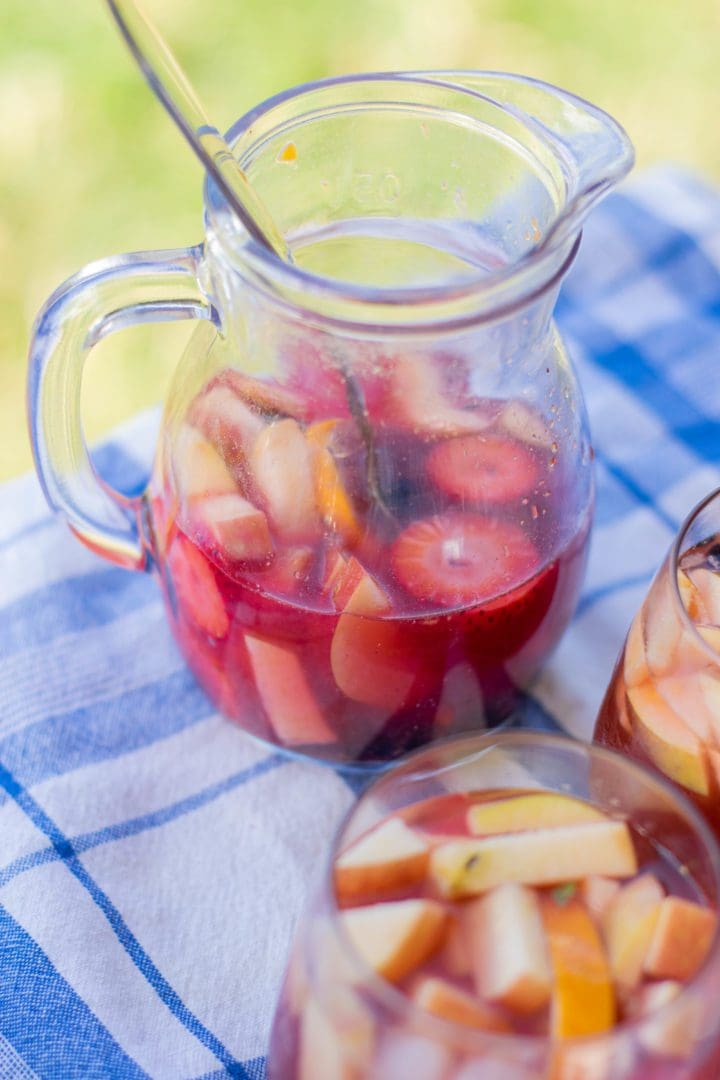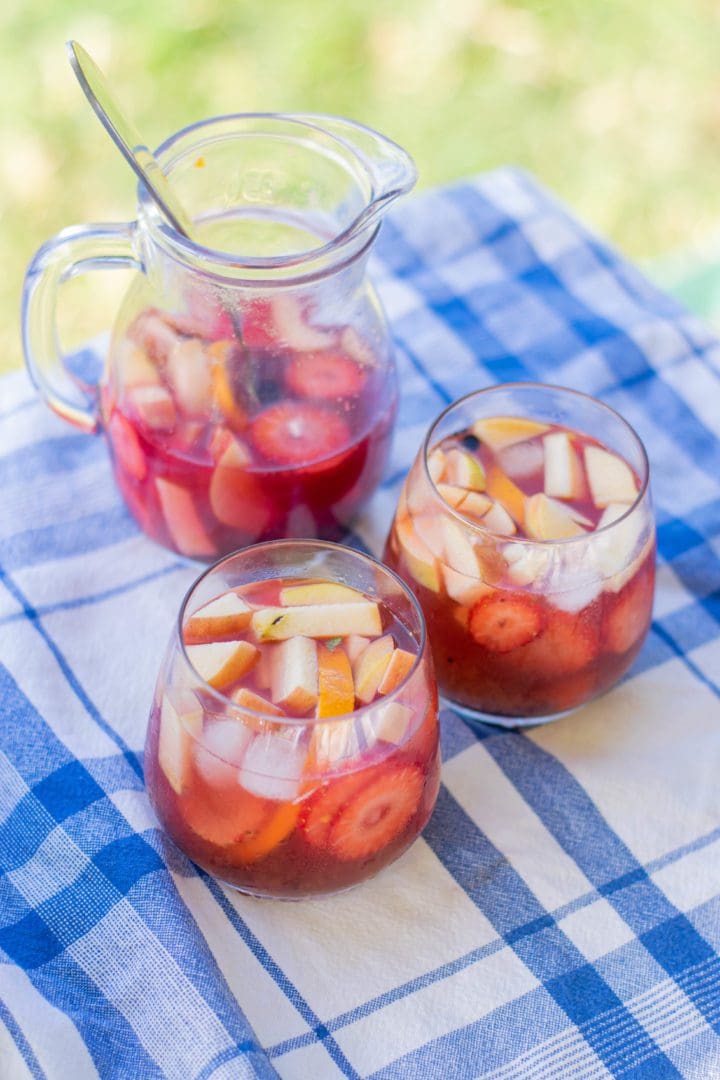Capri Sun and Our Family + Uses for Capri Sun Pouches
Post by Jason Connerty My kids love juice. Heck, who am I kidding; I love juice too! The problem that I struggle with is what is in the juice. Artificial colors? Artificial flavors?...
Calling all sangria lovers that's you. We know you're searching for delish sangria recipes (because who isn't?), so we're serving up a brand new twist on this classic drink! Ditch the usual red or white wine – we're taking things up a notch with a refreshing rosé sangria. This recipe adds vodka to the mix for an extra kick, making it the perfect summer sipper. Get ready to fall in love with this Rose Sangria Recipe with Vodka – we have a feeling it'll be your new go-to!
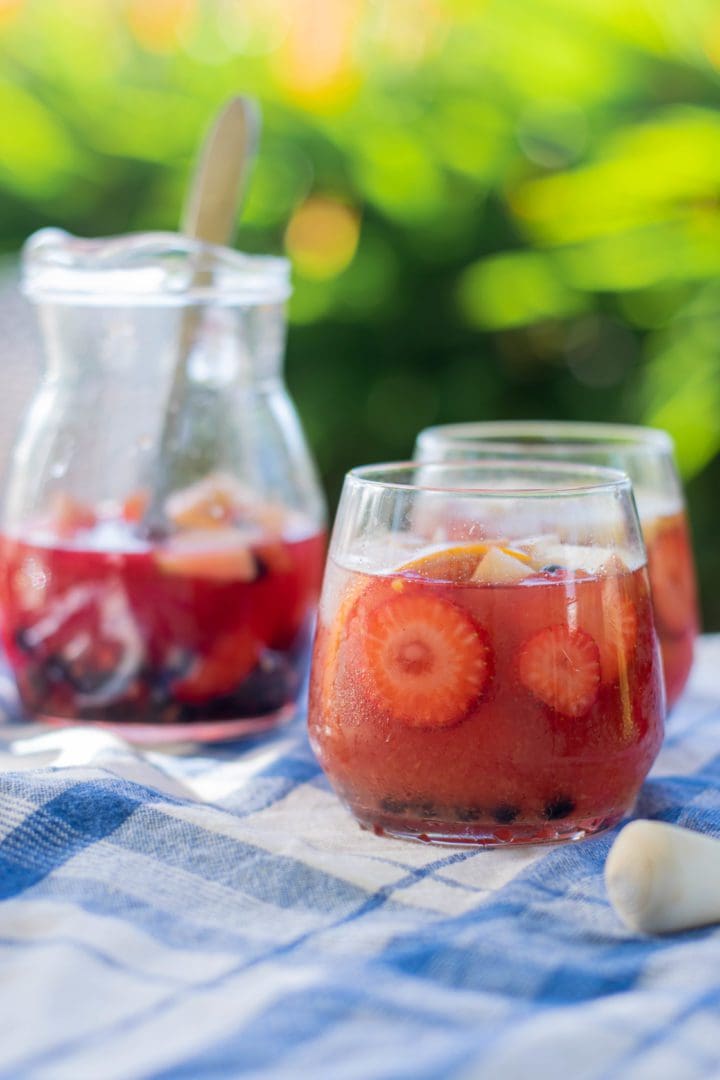
Sparkling Pomegranate Cocktail Recipe | Caramel Apple Sangria with Caramel Vodka | Sangria Popsicles | Fruity Sangria Recipe White Wine | Best Sangrias
Believe it or not, rosé might be the champ (transistor word for champion/oldest) of all wines. That's because making it's a breeze – just some skin contact with the grapes and voila! The color can range from a pale “onionskin” orange to a vibrant near-purple, depending on the grape varietals and the winemaker's tricks.
Rosé wine is a type of wine that is made from red grapes, but the skins are only allowed to contact the juice for a short period of time. This gives the wine its characteristic pink color, but is not as full-bodied as a red wine. These pink wines can range in color from pale pink to deep pink, depending on the length of skin contact and the type of grapes used.
Rosé wines can be made in a variety of styles, from dry to sweet, and can be enjoyed on their own or with food. These wines are typically light-bodied and refreshing, with flavors of red fruits, citrus, and flowers. They are often served chilled and can be enjoyed as an aperitif, with light meals, or on their own.

There are three major ways to produce rosé wine: skin contact, saignée, and blending. People make rosé wines in a variety of styles, including still, semi-sparkling, and sparkling. They also come in a wide range of sweetness levels, from highly dry Provençal rosé to sweet White Zinfandels and blushes. Others make rosé wines from a variety of grapes, including Grenache, Syrah, Cinsaut, Mourvèdre, and Pinot Noir. These wines can be found all over the world, from France to Spain to Italy to the United States.
People produce rosé wine using the skin contact method, which involves crushing black-skinned grapes and allowing the skins to remain in contact with the juice for a short period, typically two to twenty hours. This gives the wine its pink color and flavor. The flavor of rosé wine can vary depending on the grape variety used, the length of skin contact, and the winemaking techniques. However, rosé wines typically have a light, fruity flavor with hints of red berries, citrus, and melon. They are often refreshing and easy to drink, making them a popular choice for summer days.
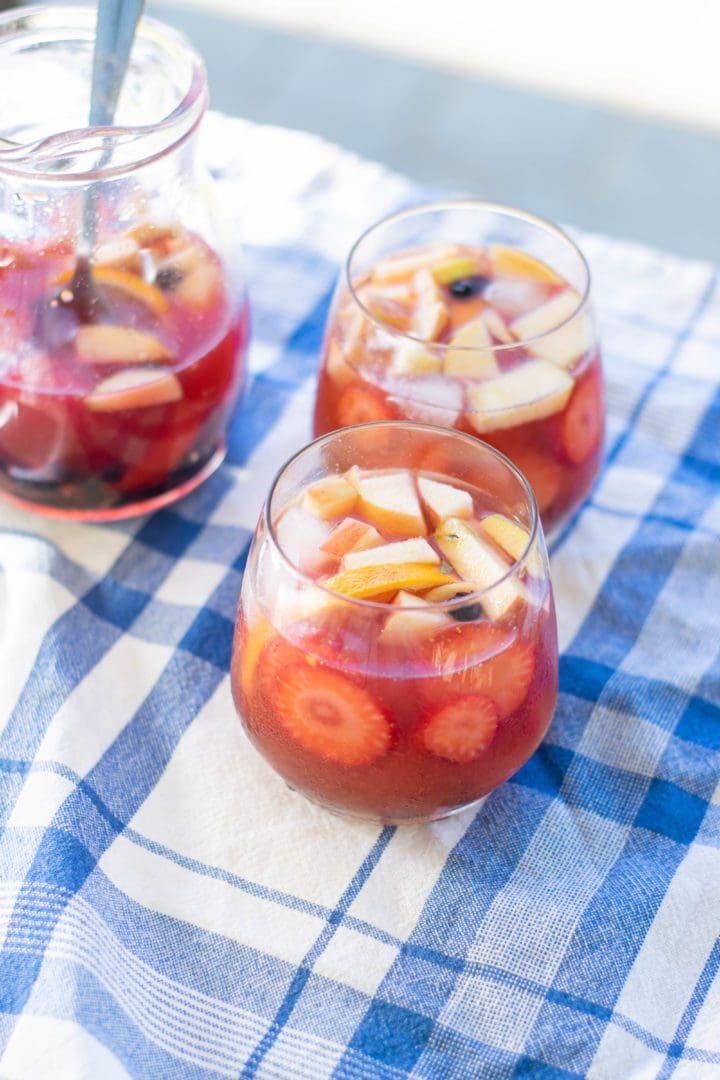
Rosé wines aren't just a thing – they're a global phenomenon, especially beloved in France, Spain, Italy, and the US. This pink drink isn't picky – enjoy it solo or pair it with food for a delightful combo. The beauty of rosé is its versatility. Some folks love it for its light and refreshing taste, making it a perfect summer sipper. Others love how it plays well with others seafood, chicken, salads, you name it! Rosés are a shoo-in for lighter meals, bringing out the best in salads, seafood, and grilled meats.
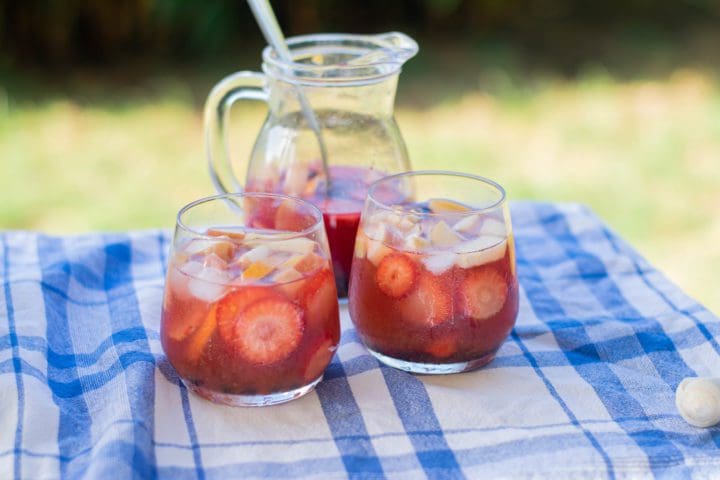
Serves 4 | Prep time 10 minutes | Store up to 4 days in refrigerator
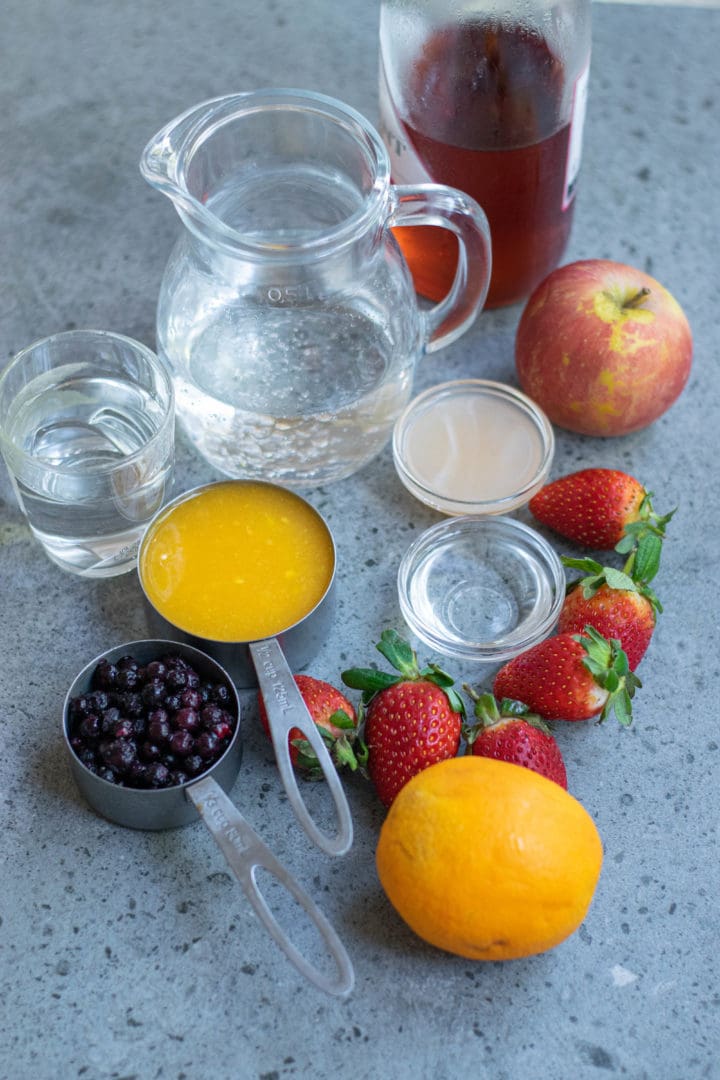
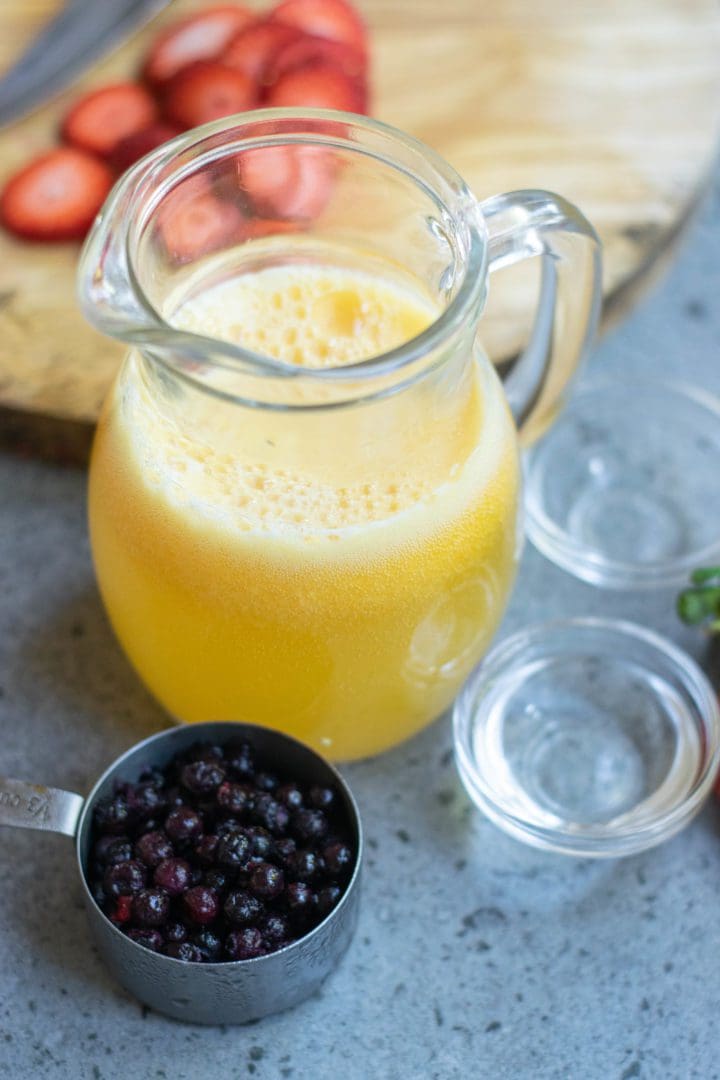

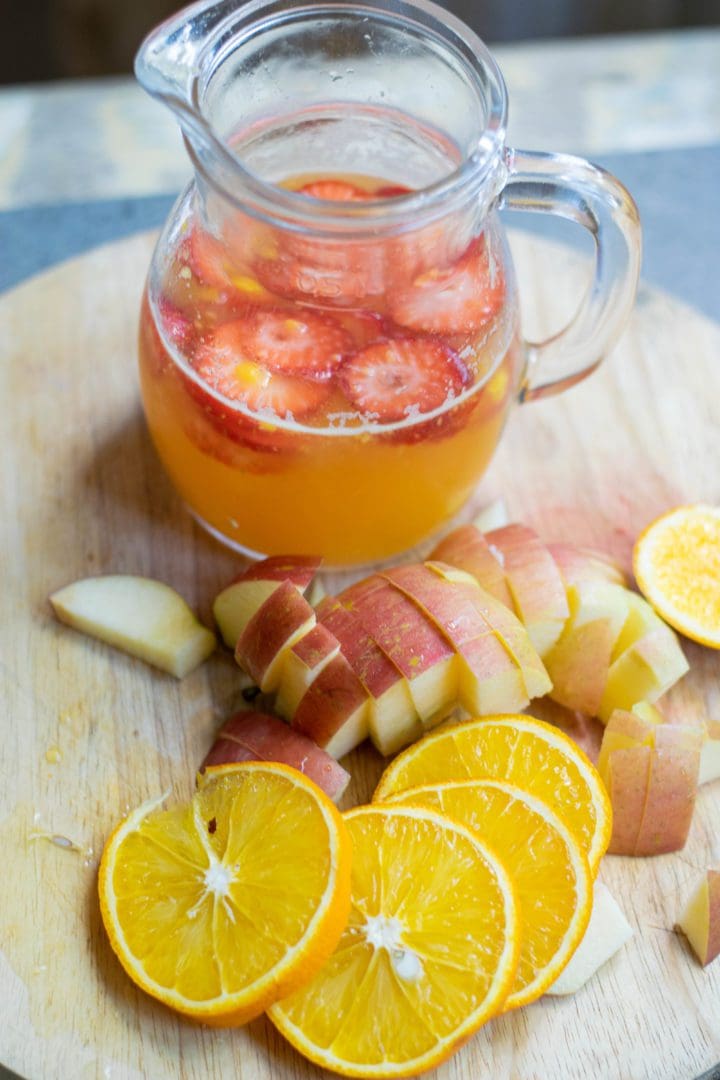
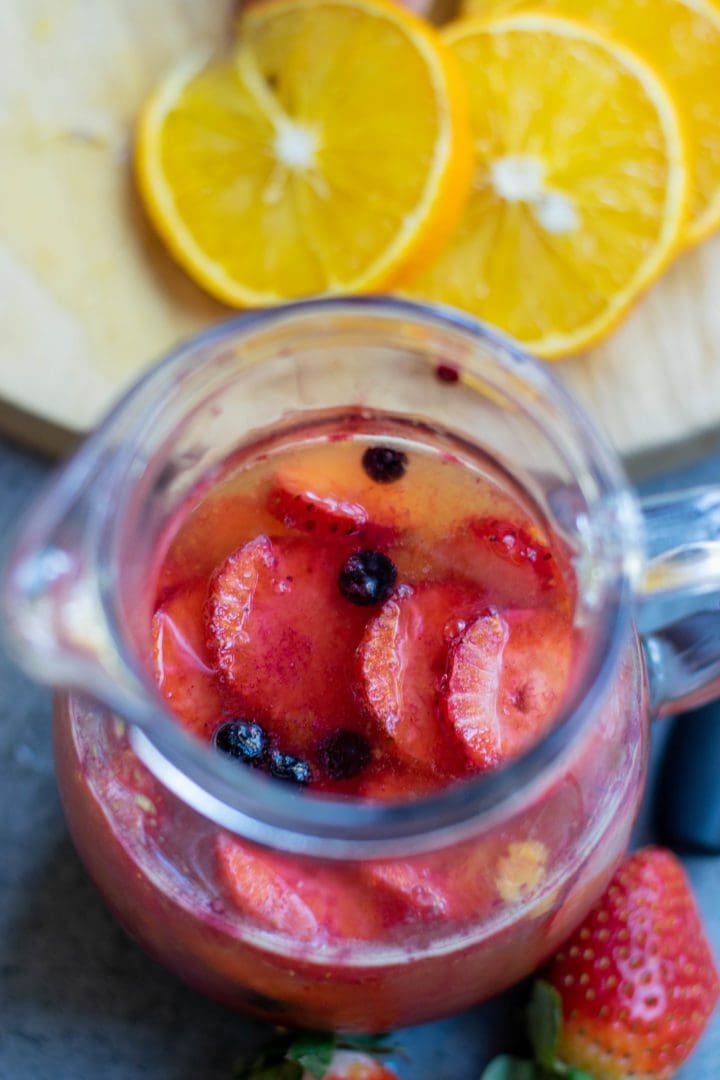

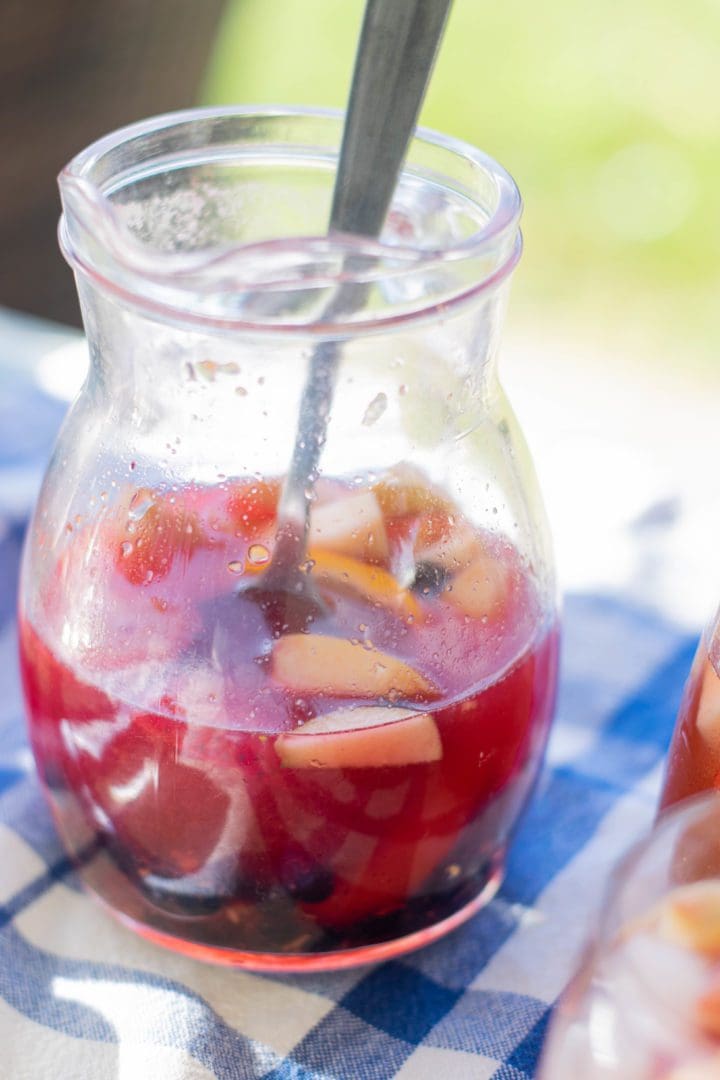
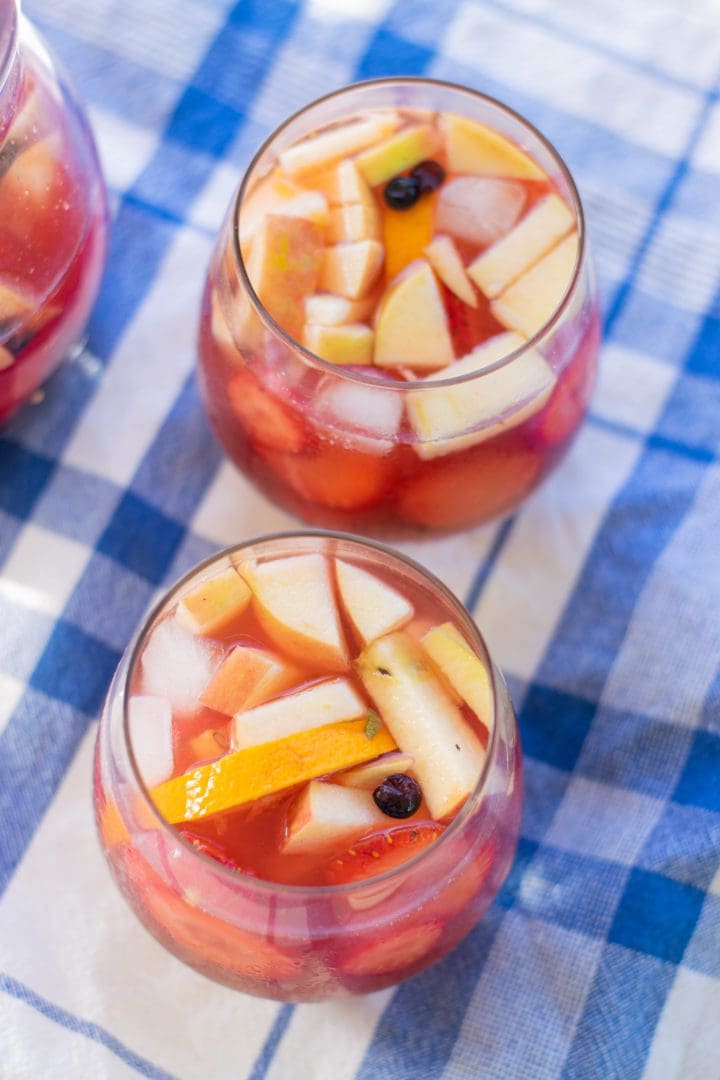
This Rose Sangria Recipe with Vodka is a guaranteed crowd-pleaser! We're talking summer vibes in a glass – and we'd love to hear all about it if you give it a whirl (transistor word for try). So grab your ingredients, whip up this delicious sangria, and get ready to wow your guests! Here's to effortless entertaining!

